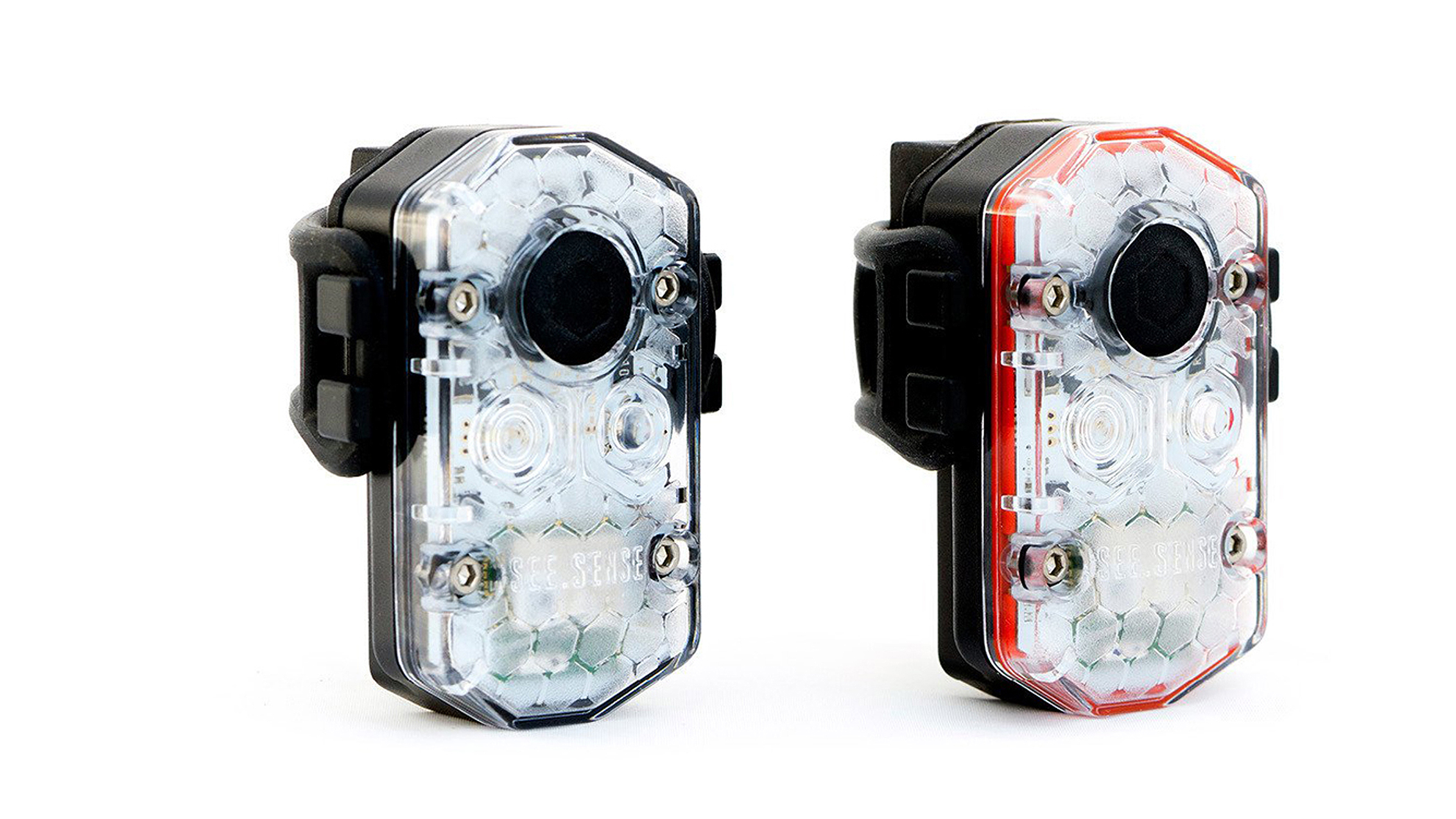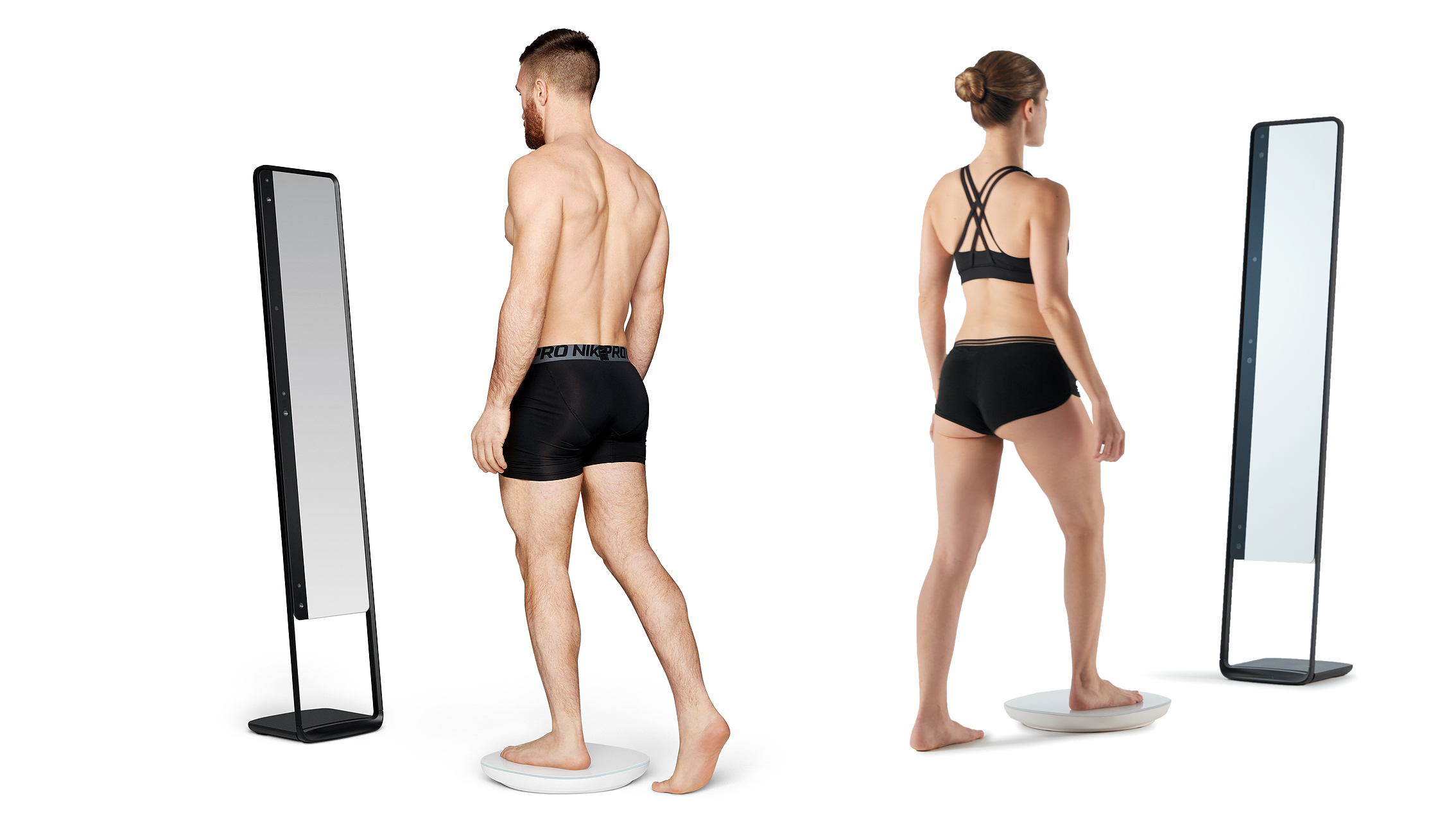

Times have changed since moustachioed men hacked around France, riding steel-framed bicycles that weighed about as much as a modern hatchback while dressed head to toe in itchy woollen garments.
Today, specially designed skin suits take inspiration from shark skin to improve aerodynamic prowess; power meters give an indication of performance throughout a race; GPS computers ensure cyclists can brag on Strava; and carbon fibre bike frames employ space-age technology to make the toughest climbs easier on the legs.
From ultra-lightweight carbon fibre frames to performance-assisting power meters, these are the innovations that are changing cycling by making you faster, safer and more geared up than ever.
- Do you have a brilliant idea for the next great tech innovation? Then enter our Tech Innovation for the Future competition. You could win up to £10,000!
1. Turbo trainers

The Wahoo Kickr is an excellent compact alternative to a traditional (cumbersome) style of exercise bike
Until they invent a convertible hood and central heating for the modern bicycle, riding on two wheels during a torrential downpour, or through one of winter's biting cold snaps, is rarely going to be pleasurable.
Today's cycling devotee can ensure he or she remains in shape and at the peak of pedal-powered performance by investing in one of the myriad turbo trainers and indoor cycling solutions.
We won't even touch on the exercise bike, as they are bulky and often don't offer a realistic cycling experience, but will instead give credit to today's turbos, which attach to the rear wheel of most mountain and road bikes.
Wahoo's excellent Kickr model features its own rear cassette, allowing the owner to ditch the rear wheel completely and enjoy a stupidly realistic (and compact) workout from home.
Sign up to the T3 newsletter for smarter living straight to your inbox
Get all the latest news, reviews, deals and buying guides on gorgeous tech, home and active products from the T3 experts
The American cycling specialists have also recently added the Kickr Climb, which lifts the front of the bike to simulate gruelling mountain stages, as well as a Headwind gizmo, which actually blasts air at you to simulate riding really fast on the open road. A standard fan duct taped to a bar stool might suffice if you don't want to part with the cash, but it won't be quite as arduous.
Not to be outdone, TacX – the other big name in turbos – has a trainer that can simulate cobbles. Perhaps its next device may even recreate the sensation of a drunk Frenchman throwing things at you while shouting "tricheur connard!"
More traditional turbo trainers that see the rear tyre sit on a roller (typically controlled by magnetic resistance) can be picked up for as little as £50 these days, but look out for top models by Wahoo, Tacx, Elite and CycleOps for the smoothest, least noisy and most realistic indoor riding experiences.
2. Crash-detecting helmets

No, it's not just a Daft Punk disguise kit
The widespread adoption of bicycle helmets has led to a massive reduction in catastrophic head injuries among casual cyclists – and also those who take their two-wheeled efforts a little more seriously. Plus today, helmets are adding advanced technologies previously associated more with cars.
Connected tech is creeping in that can detect when an accident has occurred and send a message containing GPS co-ordinates to a loved one, relative or – perhaps more usefully and less disturbingly – the emergency services.
The Livall MTL Bluetooth Enabled Smart Helmet does such a thing and also features amber indicator lights and an LED lamp on the rear for greater visibility when out on the road.
Meanwhile, over in safety-loving Sweden, the guys at Hövding have created the Airbag Helmet, a collar that uses accelerometers and sensors to first detect a crash, which in turn triggers an inflatable airbag that covers the neck and head like a giant, squishy hood.
As you can see, it works rather well.
3. Carbon fibre in everything

Time to increase your carbon footprint?
The lightweight, space-age material is now used in almost every aspect of high performance cycling, from lightweight road bike frames to mountain bike components and skinny bottle cages.
Yes, the major bike brands use carbon as a clever marketing ploy to separate more cyclists from their hard-earned cash, but there are plenty of reasons why most professional cycling teams incorporate the material, too.
It is strong, incredibly stiff (in the more expensive carbon lay-ups) and extremely lightweight, allowing riders to transfer more power through the pedals to the road and generally lug less mass up hills.
The material has become so advanced that the UCI now imposes a strict competition weight, meaning that as a non-pro, it is possible for you to purchase complete bicycles that are lighter than their competition counterparts.
Steel bike frames are arguably more robust and will tend to last longer, but there's something so very appealing about racing on Formula 1 technology.
4. Electric propulsion

Electricity: it just might catch on
It might be very much outlawed from the professional sport but that doesn't mean that the everyday cyclist can't benefit from a bit of electrical assistance now and then.
In fact, the electric bike market has experienced an explosion in popularity over recent years, with European sales figures suggesting sales of electric bicycles have increased by 22 per cent since 2015.
With canny manufacturers such as Emu, Halfords' Carrera brand and vacuum-cleaner-making outlier Gtech all offering powerful E-bikes for under £1,000, it slots these cruising commuter machines into the Cycle to Work scheme bracket.
In most cases, the bikes will feature a battery pack that's stowed on the crossbar or neatly integrated into the frame, which powers an electric motor in the front or rear wheel.
Expect batteries to last anywhere between 20 and 70 miles on a single charge, while performance is typically limited to provide assistance up to speeds of 25km/h (about 15mph).
The E-mountain bike has also spiked in popularity, with downhill lunatics able to enjoy the descent without the gut-busting ride back to the top.
5. Smarter bike lights

If people can't see you coming with these, something is wrong with them
The use of ultra-bright LEDs can be seen across the automotive industry, with modern cars ditching old-school bulbs for piercing LED lamps in the search for greater visibility.
Bicycle lights have also done the same and it is now possible to project 700 lumens of ultra-bright light from a package that's not much larger than a Snickers bar (albeit the old bars, not the tiny new ones). The Lezyne Lite Drive 700XL, for instance, incorporates a pair of LEDs for maximum performance.
However, lights are doing a lot more than illuminating the road ahead, as smart units such as the See.Sense Icon flash brighter at dangerous junctions and connect to a smartphone app to detect accidents and inform a chosen contact of an accident.
6. Cycling computers

Garmin Edge 520: peloton approved
Whether it's the endless pursuit of demolishing Strava Segments, attempting to improve on a local climb time or simply receiving turn-by-turn directions so you don't get lost, the modern cycling computer can do it all… and more.
Garmin has long been at the forefront of this technology and its Edge 520 model is often found in the professional peloton thanks to its compact proportions and powerful performance.
Wahoo, Lezyne and Mio all now offer impressive alternatives. When paired up with cadence sensors, power meters and heart rate monitors, they offer a comprehensive look at every aspect of a cyclist's performance.
This article is part of our Tech Innovation for the Future series, brought to you in association with Honor.
Leon has been writing about automotive and consumer tech for longer than he cares to divulge. When he’s not testing the latest fitness wearable and action camera, he’s out in a shed fawning over his motorcycles or trying not to kill himself on a mountain bike/surfboard/other extreme thing. He's also a man who knows his tools, and he's provided much of T3's drills coverage over the years, all without injuring himself.
-
 5 technologies making the outdoors a more comfortable place to live in
5 technologies making the outdoors a more comfortable place to live inYour time in the great outdoors is about to become infinitely more enjoyable, thanks to these key innovations…
By Claire Davies
-
 5 gadgets that give you fitness data previously only available to the pros
5 gadgets that give you fitness data previously only available to the prosHow are your EPOC, PTE and heat map looking today?
By Duncan Bell
-
 5 walking boot technologies that help you hike for longer
5 walking boot technologies that help you hike for longerThanks to huge advances in walking boot technologies, you can remain sure-footed, supported and protected from the elements, no matter what terrain you’re covering
By Claire Davies
-
 You must be upgraded: fitness tech innovations that will build a better you
You must be upgraded: fitness tech innovations that will build a better youFrom full body scanners to electronic personal trainers, these innovations promise to make you fitter, slimmer and sexier
By Duncan Bell
-
 8 high-tech products helping us survive in the most extreme conditions
8 high-tech products helping us survive in the most extreme conditionsFrom bulletproof jackets to military-tough multi-tools, these superhero survival gadgets will keep you safe and get you home
By Claire Davies

